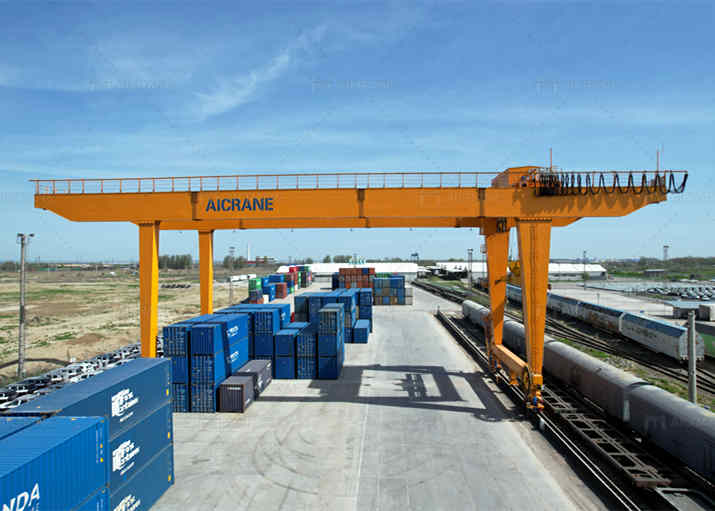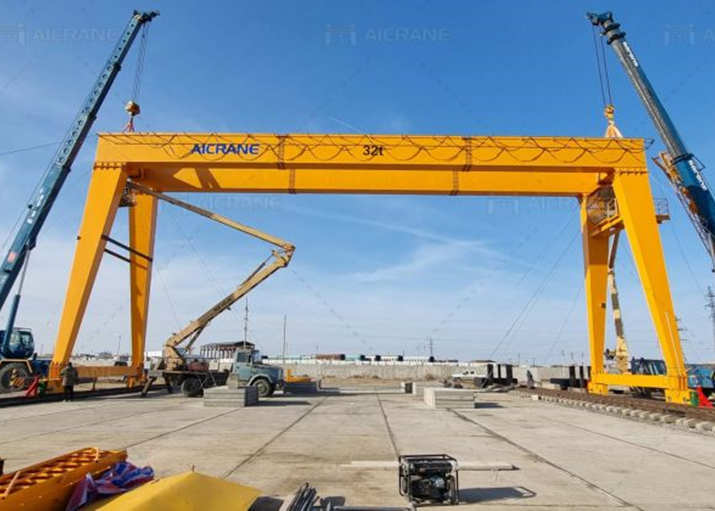When purchasing a container crane, whether for port operations or heavy-duty material handling, one of the most important factors to consider is the warranty provided by the manufacturer. A comprehensive warranty ensures that the crane you invest in is covered for defects and performance issues over a specified period, offering peace of mind and protecting your investment. To help you navigate the process, here are some key steps on how to get a warranty from container crane manufacturers.

Understand the Types of Warranties Offered by Manufacturers
Before negotiating a warranty with a container gantry crane manufacturer, it’s crucial to understand the different types of warranties that may be available. Warranties can vary widely depending on the manufacturer, crane model, and specific terms of sale.
Common Types of Warranties:
Standard Manufacturer’s Warranty: This is the basic warranty that most manufacturers offer. It typically covers defects in materials and workmanship for a limited time, often ranging from one to five years.
Extended Warranty: Some manufacturers offer extended warranties for an additional fee, which extends the coverage period beyond the standard terms. This is beneficial if you want extra protection beyond the basic coverage.
Service Warranty: This warranty focuses on the manufacturer’s commitment to provide ongoing maintenance and support for the crane throughout its lifetime. It may cover regular servicing, inspection, and repair services.
Parts Warranty: In addition to the warranty covering the entire crane, many manufacturers provide a separate warranty for critical parts such as the lifting mechanism, hoist, and motor, ensuring they are covered for a specific period.
Clarify the Scope of the Warranty
Once you have an understanding of the available warranty types, the next step is to clarify the scope of the warranty provided by the container crane manufacturers. A comprehensive warranty will cover a variety of aspects of the crane, but it’s important to confirm the specifics.
Key Elements to Clarify in the Warranty:
Coverage Period: Determine the length of the warranty period and when it starts. Some manufacturers may start the warranty period from the installation date, while others may start it from the delivery date. Make sure the start date is clearly defined.
What’s Covered: Understand which parts of the gantry crane are covered under the warranty. Typically, the warranty will cover defects in manufacturing and materials, but check whether it includes important components such as the hoist, lifting ropes, drive system, electrical systems, and hydraulic mechanisms.
What’s Excluded: Some warranties may have exclusions, such as coverage for damage due to misuse, lack of maintenance, or unauthorized modifications. Be aware of any conditions that may void the warranty.
Maintenance Requirements: Ensure you understand any maintenance requirements that must be met to keep the warranty valid. Some manufacturers may require regular servicing by their authorized personnel or specific maintenance tasks to be completed on schedule.
Transferability: If you plan to sell the crane during the warranty period, check if the warranty is transferable to a new owner. Transferability can add value to the crane if you decide to sell it before the warranty expires.
Inquire About Warranty Extensions
In some cases, container crane manufacturers like Aicrane offer the option to extend the warranty beyond the initial coverage period. This extension can be purchased as an add-on or included as part of a service package.
Benefits of a Warranty Extension:
Longer Protection: A longer warranty period ensures that your crane remains covered for an extended time, offering ongoing protection against repairs and replacements.
Peace of Mind: Extended warranties help minimize unexpected repair costs and reduce the financial burden of maintaining a large and complex machine.
Increased Resale Value: A crane with an extended warranty may be more attractive to potential buyers, as it offers continued protection after the original warranty period expires.
When negotiating with the manufacturer, be sure to ask about the availability of extended warranties and any associated costs. Consider the potential benefits of having longer-term coverage for peace of mind.

Ensure Proper Documentation
To avoid any future disputes, ensure that all warranty terms are clearly documented in the contract or purchase agreement. This will safeguard both you and the manufacturer in case any issues arise during the warranty period.
What to Include in the Warranty Documentation:
Terms and Conditions: Ensure the warranty document outlines all the terms and conditions, including coverage specifics, exclusions, and maintenance requirements.
Clear Instructions for Claims: The warranty should specify the process for making claims, including the necessary documentation, forms, and contacts for support.
Manufacturer’s Contact Information: Always confirm that the warranty includes clear contact details for the manufacturer’s customer service or support team, which will be essential for future warranty claims.
Service and Repair Protocols: The warranty should describe the process for repairs and replacements. Some manufacturers may require you to send the crane to an authorized service center, while others may provide on-site repair services.
Negotiate Warranty Terms During Purchase
When you’re negotiating the purchase of a container crane, make sure that the warranty terms are discussed upfront. By negotiating these terms early in the process, you can secure a warranty that provides the best value for your needs.
How to Negotiate the Warranty:
Use Your Leverage: If you’re purchasing multiple cranes or placing a large order, use your purchasing power to negotiate better warranty terms. Ask for a longer coverage period or more comprehensive coverage at no additional cost.
Request Additional Services: If the standard warranty does not cover certain services, such as on-site repairs or expedited support, consider negotiating for these services to be included. This can save you money in the long term by reducing downtime and repair costs.
Discounts for Extended Warranties: If the manufacturer offers extended warranties for an additional fee, negotiate for a discounted price on the extension, especially if you’re a loyal customer or purchasing a high-value crane.
Regular Maintenance to Keep the Warranty Valid
A crucial part of securing and maintaining a warranty is adhering to the manufacturer’s guidelines for maintenance and care. Most container crane manufacturers require that you perform routine maintenance to ensure the crane operates optimally and to keep the warranty valid.
What Maintenance Is Required:
Routine Inspections: Regularly inspect the crane’s components, including its lifting mechanism, electrical systems, and structural parts, to identify potential issues before they lead to major breakdowns.
Lubrication and Cleaning: Follow the manufacturer’s instructions for lubricating moving parts and cleaning the crane. This prevents wear and tear and reduces the likelihood of malfunction.
Authorized Service Providers: Some manufacturers may require that only authorized service providers handle maintenance or repairs to keep the warranty intact. Ensure that you’re using qualified technicians who are familiar with the manufacturer’s equipment.
Understand Warranty Limitations and Claim Procedures
It’s essential to familiarize yourself with the limitations of the warranty and the steps to follow when making a claim. Knowing this information will help you avoid potential delays or misunderstandings in the event of a fault.
What to Know About Warranty Claims:
Claim Timeline: Some warranties require that you file a claim within a specific timeframe after discovering an issue. Be aware of the deadlines for reporting faults and making claims.
Documentation for Claims: Keep detailed records of crane usage, maintenance, and any issues that arise. This documentation will be important when making a warranty claim.
Authorized Repairs: Understand the process for getting repairs authorized by the manufacturer. In some cases, you may need pre-approval for any repair work, especially if the crane is still under warranty.
Securing a warranty from container crane manufacturers is essential for protecting your investment and ensuring the long-term reliability of the equipment. By understanding the types of warranties offered, clarifying the scope of coverage, negotiating the best terms, and adhering to maintenance guidelines, you can ensure that your crane remains operational and well-maintained throughout its lifespan. Always remember to keep proper documentation, understand the warranty limitations, and follow the manufacturer’s instructions for claims to make the most of your warranty.